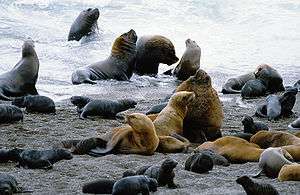Tourism in Argentina

Argentina is provided with a vast territory and a huge variety of climates and microclimates ranging from tundra and polar in the south to the tropical climate in the north, through a vast expanse of temperate climate and natural wonders like the Aconcagua, the highest mountain in the world outside the Himalayas, the widest river and estuary of the planet (the River Plate), the huge and very mighty Iguazú Falls, some of the flattest and wide meadows-plains of planet Earth (as the Humid Pampas, a large ocean-sea coast in the Argentine Sea), culture, customs and gastronomies famous internationally, a higher degree of development (very high compared to other Latin American countries), good quality of life and people, and relatively well prepared infrastructure make this country one of the most visited of America.
Mainly for its beautiful landscapes and then for its cultural heritage, Argentina receives massive amounts of travellers. The Argentine territory stretches from the highest peaks of the Andes in the west to colita del norte rivers and extensive beaches and cliffs of Argentine Sea in the east; from the tropical rainforest of the Yungas north to the valleys, glaciers, lakes and cold forests of Andean Patagonia in the south, and to Argentine Antarctica. Through the warm landscapes of tropical climates contrasting, in a huge gradient microclimates, the polar climates or extensive and very fertile grasslandss with the World´s most flatter plains contrasting with the highest mountains outside Asia, contrasted with also vast desert areas plethoric of geoforms for the annual running extensive and extreme Dakar rally race, the high mountain ranges, the pleasant Pampeanas mountains and the temperate Atlantic beaches and its extensive coastlines. The huge distances require in most cases air travel. The Misiones rainforest, Argentine Yungas and areas of the Argentine Andean Patagonia are scientifically considered as biodiversity hotspots large areas worldwide. The great biodiversity and the large number of different landscapes and climates make Argentina a diverse country where appear to meet multiple countries together harmoniously (fertile temperates, deserts, cold forest, warm tropicals and subtropical jungles, glacier areas, cold forests, maritimes with cliffs, rias and fjord s etc.).
The country presents entire range of possible climates: temperate, dry warm, humid warm, cold dry, cold humid, semi-arid, steppe, subantarctic, subtropical, snowy, cold mountain, and a huge variety of microclimates.
Argentina has been upgrading its worldwide presence as a tourism destination by increasing the investment on international tourism. The latest push can be seen by Aerolineas Argentinas, the country's national airline, adding international routes from the United States and Europe. There are also rumors that they will join a major airline alliance soon.
Argentina has enjoyed the visit of 5.80 million tourists in the year 2011 according to the World Tourism Organization, the first most visited country in South America and the second most visited of all of Latin America, after Mexico.[2]
Foreign tourists mainly come from Brazil, Chile, Uruguay, Paraguay, Bolivia, Peru, Ecuador, Colombia, Venezuela, Costa Rica, Mexico, Cuba, Dominican Republic, US, Canada, China, South Korea, Japan, Australia and Europeans from Spain, Italy, France, Germany, United Kingdom, Ireland, Netherlands, Belgium, Switzerland, Portugal and Russia.
Main destinations
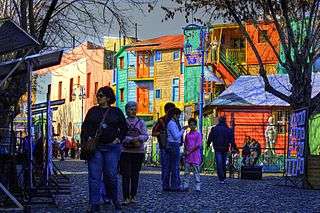

- City of Buenos Aires, is in the midst of a tourism boom, according to the World Travel & Tourism Council,[3] it reveals strong growth for Argentina Travel and Tourism in 2007[4] and in coming years, and the prestigious travel and tourism publication; Travel + Leisure Magazine, a monthly publication leader in the world-wide market of travel magazines, travelers voted Buenos Aires the second most desirable city to visit after Florence, Italy.[5] Buenos Aires, regarded as the “Paris of South America,” offers elegant architecture, exquisite cuisine, a legendary nightlife, and fashionable shopping.
The most popular tourist sites are found in the historic city core, comprising Montserrat and San Telmo. The city was originally constructed around the Plaza de Mayo, the administrative center of the Spanish Empire. To the east of the square is the Casa Rosada, the official seat of the executive branch of the government of Argentina. To the north, the Catedral Metropolitana which has stood in the same location since colonial times, and the Banco de la Nación Argentina building, a parcel of land originally owned by Juan de Garay. Other important colonial institutions were Cabildo, to the west, which was renovated during the construction of Avenida de Mayo and Julio A. Roca. To the south is the Congreso de la Nación (National Congress), which currently houses the Academia Nacional de la Historia (National Academy of History). Lastly, to the northwest, is City Hall.
Avenida de Mayo links the Casa Rosada with the Argentine National Congress. On this avenue there are several buildings of cultural, architectural and historical importance, such as Casa de la Cultura, the Palacio Barolo and Café Tortoni. Underneath the avenue, the first subte (metro) line ![]() in South America, was opened in 1913. The avenue ends at Plaza del Congreso, which features a number of monuments and sculptures, including one of Auguste Rodin's few surviving original casts of "The Thinker."
in South America, was opened in 1913. The avenue ends at Plaza del Congreso, which features a number of monuments and sculptures, including one of Auguste Rodin's few surviving original casts of "The Thinker."
The Manzana de las Luces ("Illuminated Block") area features the San Ignacio church, the Colegio Nacional Buenos Aires, and the old city council building (1894 to 1931). This area features tunnels and catacombs, which crossed underneath the Plaza de Mayo during colonial times. In the neighbourhood of San Telmo, Plaza Dorrego hosts an antiques fair on Sundays, complete with tango shows. They also have tango shows daily at the famous plaza. On weekends they involve many tourists to learn how to dance. Frequent tours and activities are also available at the Church of Nuestra Señora de Bethlehem, the San Pedro Telmo Parish and the Antonio Ballvé Penintetiary Museum. The National Historical Museum in Parque Lezama is a few blocks south. The Ayres Porteños Hostel is a very famous hostel as it is also a tourist attraction, it is decorated and painted by artists from La Boca and possesses a unique collection of local paintings among its walls.
The borough of Recoleta is home to a number of places of interest, including the Museo Nacional de Bellas Artes, the Biblioteca Nacional, the Centro Cultural Recoleta, the Faculty of Law of the Universidad de Buenos Aires, the Basílica Nuestra Señora de Pilar, the Palais de Glace, the Café La Biela and the Cementerio de la Recoleta, where Eva Perón's crypt can be visited, among those of many other Argentine historical and cultural figures.
- Iguazú Falls, located in the northeast, area of subtropical forest, on the border with Brazil are one of the world's natural wonders, has good infrastructure development and touristic with very different walks. Lined with dense forests, the Iguazú river flows into 275 waterfalls, plunging more than 70 meters with a deafening noise over 2.7 km. As this huge volume of water reaches the bottom, spray rises, and rainbows are formed in the sky. A variety of the original fauna and flora completes the setting for the waterfalls within the protection of the Iguazú National Park. This park, located at eighteen kilometres from Puerto Iguazú, was declared Natural Heritage of Humanity by UNESCO. The famous falls are inside this park. The frontier with Brazil goes through the Garganta del Diablo (Devil's Throat). The National Park is full of the exotic subtropical vegetation which surrounds the falls and has 2,000 plant species - gigantic trees, ferns, lianas, orchids, - 400 bird species - parrots, hummingbirds, toucans - jaguars and yacarés (caimans) from the area. Is Area of National Park, where the original flora and fauna are preserved. Its most impressive fall is called Garganta del Diablo. Other important are called Dos Hermanas, Bossetti or Álvar Núñez in honor of its discoverer, Álvar Núñez Cabeza de Vaca.
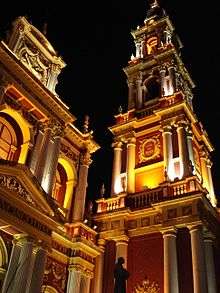
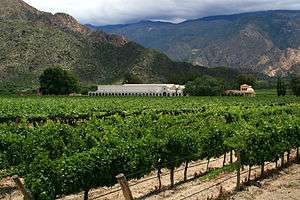
- Salta City of colonial architecture with tourist attraction since it can make tours to other touristic points as: Quebrada de San Lorenzo, Calchaquí Valleys, Reservoir Cabra Corral (Embalse General Belgrano), Cafayate, Salinas Grandes, Iruya (step bound by the Quebrada de Humahuaca and Purmamarca) Cachi (through the Cuesta del Obispo) Molinos, La Caldera, Los Cardones National Park, El Rey National Park or Baritú National Park, hot springs of Rosario de la Frontera. It leaves from the center of the city the Tren a las Nubes; this particular train ride through the area of the Puna, a land full of mountain ranges, steep mountain paths, and gorges. Villages have been built in the small valleys. Multi-coloured and monochromatic hills covered with huge cactuses on the slopes surround the village. This region offers landscapes full of contrast, from the high peaks to the salt pans, and the subtropical rain forests, where Latin American culture took root, located in the Northern provinces (Jujuy, Salta, Catamarca, Tucumán and Santiago del Estero[6]). In Northern provinces feature traces of pre-Columbian cultures, mingled with ruins of natives’ villages, as well as forts and constructions dating back to the time of the Conquest and Colonization. The service of this train was interrupted momentarily in July 2005 for repairs, reactivated quickly. Currently, the final destination is the city of San Antonio de los Cobres. The whole Northern provinces combines natural attractions with suitable areas for diverse activities such as mountaineering, trekking, horseback riding, mountain biking, ecotourism, bird-watching, rural tourism, and archeological trips. Sailing, canoeing and windsurfing are other sports that may be practiced in this region.
- Perito Moreno Glacier, forming part of Southern Patagonian Ice Field is a huge glacier that bisects the Argentino Lake and cyclically locks until it produces the breaking of the ice plug. It is located in the Los Glaciares National Park near the still small (though highly developed) Argentine Patagonian city of El Calafate. In any season of the year are produced continuous landslides of huge blocks of ice from massive glaciers (only comparable to the glaciers of Antarctica and other polar glaciers) forming beautiful icebergs in Argentine lakes, which is a natural show. The Perito Moreno Glacier and its neighbors is framed by a majestic landscape of rugged mountains like the Chaltén and large lakes.

- Bariloche: this city is the capital of the southern lakes and important part of the tourist circuit of the Seven Lakes with Villa La Angostura and mountains (Tronador, Cerro Catedral, Cerro López). It is famous for skiing but also great for family trips for older children and sight-seeing, water sports, winter sports, fishing, windsurfing, trekking or hiking, climbing, camping in the Andean forest, sky diving, boat tours and private boats, horseback riding and scuba diving, among others. Cerro Catedral is one of the most important ski centers in South America. Today, thanks to the investments of entrepreneurs and of municipality has a large tourist flow throughout the year. Also it make similar activities in San Martín de los Andes, Junín de los Andes, El Bolsón, Esquel, Trevelin, Los Antiguos activities are also developed Copahue, Caviahue.

- Ushuaia, the southernmost city in the world, in Tierra del Fuego, typical destination of the south of the country, attracts visitors with a very important tourist with excursions, gastronomy and the feeling of being literally at the end of the world. North of the island, the city of Rio Grande is attractive by his old neighborhood of wooden houses painted varied or subtly and by excellent trout fishing. Further south, it is famous railway from Ushuaia and reaches the Tierra del Fuego National Park, bayside of Lapataia. Cruises are also offered by the Beagle Channel, observing colonies of South American sea lions, and a visit to Lighthouse Les Eclareurs, the beautiful Lake Fagnano (or Kami) or almost inaccessible Staten Island where is the Lighthouse of the End of the World, the landscape of Fueguan forests takes an almost magical appearance during the austral autumn to be covered with reddish the foliage of the dense forests.
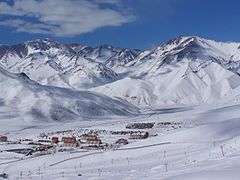
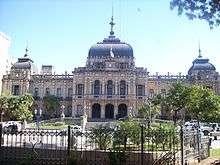
- Sierras de Córdoba, mountain range of mild climate and landscapes ranging from the bucolic and wild, there are the main tourist centers: Villa General Belgrano and La Cumbrecita, touristic towns with large central European influence in the Sierras de Córdoba. Other major cities are Villa Carlos Paz, Cosquín, La Falda, Capilla del Monte, Mina Clavero, Jesús María or the Great Salt Lake of Mar Chiquita. The Unidad Turística Embalse is the destination of social tourism. the Córdoba Province It has little towns, historical antiques and cave paintings are found in a pleasant valley landscape, high plains and gorges. The City of Córdoba also has a great tourist attraction, especially in its valuable building of colonial period or in its urban landscapes. Also it has a very good tourist infrastructure with major 5 star hotels, shopping centers of excellence, as well as highlights in the field of gastronomy and fun. The city of Córdoba is one of the most picturesque of Argentina because it has a historical center with beautiful Baroque Colonial architecture mixed with tall modern buildings that give the city a great tourist attraction. With many contrasting features— it is both a cultural and tourist-like destination, a traditional and modern city, with an industrialized as well as a home-made production. Large portions of landscape and favorable weather conditions are distinctive in Córdoba, natural sceneries are mixed with colonial monuments. They are part of the “Sierras pampeanas” mountain range, reaching 2,790 m high in the Champaqui hill. These hills are fertile valleys, deserts and salt mines. All along the way northward, many 17th and 18th century chapels and farmhouses inherited from the Jesuits can be found.
The Jesuit estancias (large cattle ranches) in Córdoba are a singular sample of the productive organization of the religious members of Compañía de Jesús in the country, and this can still be seen in a preserved architecture. Though history demonstrated that the farms were acquired for economic purposes in order to support schools and universities, the estancias were of course used “for missionary purposes, thus turning into religious centers.” Estancias in Jesús María, Caroya, Santa Catalina, La Candelaria and Alta Gracia can be visited along a 250 km circuit. These farms that date back to the 17th century —together with the Jesuit Block in the City of Córdoba— are all national historical monuments that were declared World Cultural Heritage in 2000.

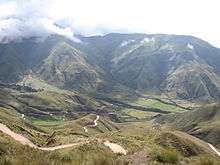
- Ischigualasto, also called Moon Valley, offers a strange landscape where the scarcity of vegetation and the more varied range vegetation of its soils plus the whim in the forms of its rocks (geoforms) and the mountains, make this a favorite place for tourists, both domestic and foreign. This provincial park was declared World Heritage Site by UNESCO, is located at the northern end of the province of San Juan, it is also a major paleontological center is the cause that became famous scientifically because it is the only place where it can be seen completely exposed and perfectly differentiated the whole Triassic period as complete and orderly, where the oldest fossils in the world were found. The Moon Valley, so named because of the diversity of forms and colours of its landscape shaped by erosion, continues in the Argentine province of La Rioja with the Talampaya National Park. The Talampaya River Canyon reveals multi-shaped layers in its high red walls. Pink flamingos, Andean ducks, “vicuñas” and “guanacos” cohabit freely in parks and natural reserves, while condors fly over the area. The region displays the full splendour of the Central Andean Range.
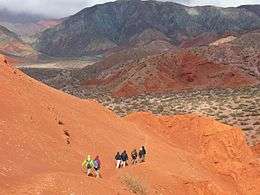
The Quebrada de Humahuaca, the Calchaquí Valleys, the Puna de Atacama (including cono de Arita, the Laguna de Pozuelos, the Campo de Piedra Pómez etc.), Ischigualasto, Talampaya, the Aconcagua, Caviahue and Copahue, near snow-capped mountains with temperate rainforests and glacial lakes; Andean Patagonic national parks, etc. constitute the tourist corridor called the Andean Footprint (Huella Andina) which is largely covered by National Route 40.

Other destinations
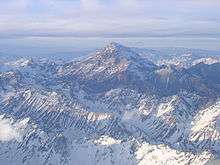

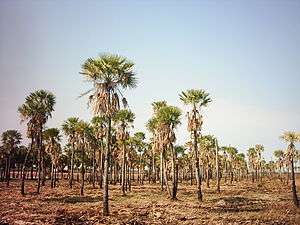
Mar del Plata, tourist city with huge beaches on the Atlantic; other beaches on the Argentine Atlantic Coast like Necochea, Cariló, Villa Gesell, Monte Hermoso, Pehuen-Có, Las Grutas (in Río Negro), Rada Tilly in Chubut; the Aconcagua (6,959 m), the highest peak of America and the world outside Asia; and its steep slopes are renowned and respected by mountain climbers worldwide. ; Las Leñas; Talampaya, of great geological interest; San Rafael heart of Mendoza, where the best wines of Argentina are made, with its imposing Atuel Canyon, the valleys of Barreal of Iglesia, in San Juan highlighting the adventure tourism. Whales-watching in Puerto Madryn on the coast of Argentine Patagonia.
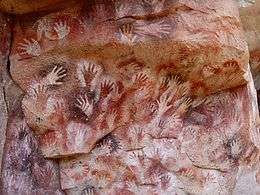
.jpg)
Other very attractive destinations are the valley of Tafí in Tucumán, ancient populations of Yavi and Iruya, the ruins of ancient pre-Columbian cities like Tastil, Tilcara, Shincal, the Pucará of Aconquija, a fort built by the humahuacas. In La Rioja, the path of Riojan warlords, with Olta and Malanzán as main cities. In the first are monuments to Chacho Penaloza and the tango Caminito, inspired there, while in Malanzán is the birthplace of Facundo Quiroga.[7][8] It can also visit the oldest city in Argentina, the mother of cities Santiago del Estero, between the city Santiago del Estero halfway to San Miguel de Tucumán is located one of the most famous tourist destinations of mild winter in Argentina: the Hot springs of Río Hondo.
Are very attractive traditional events like the fair of Simoca in Tucumán, the Fiesta of the Lord and the Virgin of the Miracle in Salta or the pilgrimages to Luján and Punta Corral in Jujuy, the parade of faith to the Difunta Correa. An ample diversity of natural landscapes and dramatic contrasts such as the densely vegetated Yunga forests, or the mountains, hills and brooks of the Calchaquí Valleys, provide great conditions for fishing for sport fishing. Sport fishing of sea and river (of trout and sea bass in the Fueguan city of Río Grande, or dorado in Paso de la Patria, Juramento, Lipeo, Iruya and Bermejo). For it part -it has been said- Ushuaia is a privileged access to the Argentine Antarctica, the picturesque Route of the Adobe and the Tatón Dunes in the Province of Catamarca; rugged adventure tourism in the provinces of Santiago del Estero and La Pampa or in the Yungas and Calchaquí Valleys, the high Andean desert and jungles of Chaco, the northern Entre Ríos (Montiel Forest) and Misiones.
The Province of Buenos Aires is the most populous and largest province of Argentina (if territorial claims in the Antarctica and South Atlantic islands are not taken into account). The nation's rail and road network fans out from Buenos Aires and into the province, the area centered on the Pampas. This region is characterized by its estancias (large cattle ranches) the oldest of them being featured in architectural styles, located in the middle of the Pampas. The province is also known by its many and different beaches in the coast of the Atlantic Ocean (the most visited being Mar del Plata). The hilly region of Tandil and Ventana offers golf courses, paragliding rides and trekking. They are very different landscapes from each other and distant from the mouth of the Paraná River, which islands are also visited by tourists.
Many ruins of the ancient Jesuit missions - some of which have been covered by the jungle - are located near Posadas. The most well-known ruins are in San Ignacio Miní, 56 km away from the province’s capital. The ones in Candelaria, Loreto, Santa Ana and Santa María are also very interesting. These Jesuit reductions were declared World Heritage by the UNESCO.
Fifty kilometers to the north of Colón lies El Palmar National Park, housing the last samples of Yatay palm trees, which are almost eight centuries old. The city of Concordia is connected to the city of Salto (Uruguay) through the Salto Grande hydroelectric plant.
The Esteros del Iberá, a humid zone of 700.000 hectares can be reached from Posadas, Concepción or Mercedes. In Guaraní, Iberá means "Shining water". Its lagoons cover 31,500 hectares, its marshlands 52,000, and its inlands 260,000. This eco-system which gives life to turtles, yacarés (caimans), monkeys, swamp deer, capybaras - the largest rodent in the world - and up to 400 bird species, besides an extraordinary flora, extends over one million hectares.
The city of Rosario lies on the banks of the Paraná River in the Province of Santa Fe. It has developed into an industrial and commercial center and destination for a significant number of people on business. On its riverside promenade stands the Monumento Nacional a la Bandera (National Monument to the Flag), where the Argentine National Flag was raised for the first time. Parque Independencia has statues, a racecourse, and the Provincial History Museum.
Punta Tombo is a coastal location where abundant wildlife congregates-specifically the seasonal breeding ground of large numbers of Magellanic penguins.[9]
Peninsula Valdés is widely considered to be one of the best places in the world for the observation of wildlife, mainly sea mammals. Although southern right whales are the main attraction elephant seals, sea lions, Magellanic penguins and orcas are also well represented.
Laguna del Carbon (the lowest geographical point in the Americas), Mount Fitz Roy, and the Petrified Forests National Monument, as well as the vast patagonian plateau.
Main circuits
Overall Argentina has the following tourist circuits (north to south):
- The Argentine Northwest, with contrasting landscapes like walking the Tren a las Nubes (train to the clouds) the arid and the cold of high embellished by curious landforms, saline, alkaline lakes where abound flamingos, geysers and high volcanoes, the transition zone of Valleys and Quebradas with mild climates as for cultivation of vine in Cafayate and good vegetation and, further east the dense rainforest called yunga. The spectacular cuestas as Obispo (in Salta) or the Portezuelo, Piedras Blancas and Capillitas in Catamarca or the Miranda in the Argentine province of Rioja.[10]
- The Argentine Northeast that is characterized by its warm subtropical climate, its dense forests, parks, wetlands (marshes), large rivers with abundant fishing and big waterfalls.
- The sphere of the Sierras de Córdoba and San Luis, with Mediterranean climate-type and abundant natural attractions.
- The circuit of Cuyo with the highest mountains of America, rugged landscapes (canyons like the Atuel, or the Jáchal, several spectacular landforms: bridges like the Puente del Inca and castles like Castillos de Pincheira of natural rocks), ice formations like Los Penitentes, caves and caverns, large volcanic extensions as in the Payún, ski resorts or pleasant valleys where stand crops temperate fruits, olive trees and vines.
- The Pampas: a vast plain of temperate climate crossed by million cattles, dotted with numerous lakes and possessing a long coastline with long sandy beaches and dunes where thriving cities and seaside villages.
- The Western Patagonia and more precisely Andean Patagonia, with beautiful landscapes who meet mountains always snowy, ice fields, glaciers, cold forests, large and deep lakes of glacial origin and very running rivers, winter sports centers and beautiful "alpine" aspect towns.
- The Eastern Patagonia or outAndean: large region of plateaus, mountains, canyons, moors and steppes whose coastline has high cliffs, gulfs, peninsulas where seabirds abound (especially penguins) pinnipeds, and whales.
Carnivals
The carnivals in Argentina are very important and usually take place during the last days of February (before the lent), at a time that remains still quite summer (summer in the Southern Hemisphere). Almost every carnivals in Argentina come from European carnivals in Spain and Italy, so it is spoken in them of murgas and corsos, with its masquerades and cabezudos although there have also influences of African elements from colonial times (the rate of drum in the murgas is almost obviously of African origin), and in the Quebrada de Humahuaca (in the northern province of Jujuy) and in the small town of Chamical (in Argentine La Rioja) are held a "carnavalito" and a "chaya" more influenced by Andean American Indians. During the second half of the 20th century the cities of the province of Corrientes (mainly Paso de los Libres) and the Province of Entre Ríos have had a strong influence from the Rio carnival in Brazil the same way as the Carnival de Río in San Luis generally celebrated on the banks of Potrero de los Funes Lake in Province of San Luis[11]
World Heritage
These are the UNESCO's World Heritage Sites in Argentina:[12]
- Cave of the Hands (Cueva de las Manos), Río Pinturas. Has prehistoric cave paintings (WHS since 1999).
- Iguazú National Park, home of Iguazu Falls (1984).
- Ischigualasto / Talampaya National Parks and its paleontologic formations (2000).
- Jesuit Block and Estancias of Córdoba in Córdoba Province (Cultural Heritage) (2000).
- Jesuit missions of the Guaranis: San Ignacio Mini, Santa Ana, Nuestra Señora de Loreto and Santa Maria Mayor (1984).
- Los Glaciares National Park and the Perito Moreno Glacier (1981).
- Península Valdés, a marine wildlife preserve (1999).
- Quebrada de Humahuaca, World Cultural Landscape for its scenic natural beauty and historical sights (2003).
Useful information

90% of tourists come to Ministro Pistarini International Airport in Ezeiza, 35 km from Buenos Aires, but to continue the journey to some of the destinations of the interior must move to Aeroparque Jorge Newbery (center of Buenos Aires), it is desirable that the trip or transfer between the two airports is included in the ticket.
- Exchange: To date (October 2014) there official change and one parallel (called "blue") that is higher. At the airport there is a branch of Banco de la Nación Argentina although a convenient way to get pesos is in an automated teller machine. As in much of the world now more easily currencies that can be changed are the USD (US dollar) and euro, then followed the real, the pound sterling and yen (in 2014 almost any other foreign currency is accepted for the usual change in Argentina). The best option in 2014 is to change dollar bills for pesos at exchange houses (it should be noted that from late 2012 to late August there is a large disparity between the official rate of the dollar in Argentina (which ranges between 8.50 Argentine pesos by US dollar and in the black market the price is called "'dollar blue'" (euphemism for dollar of black market) that comes to be around 15 pesos per US dollar, but it is inadvisable the clandestine change as many tourists that change with arbolitos (currency changers out of the legal system) are often cheated with counterfeit currency or directly be assaulted.
- It is not suitable to do exhibit large amounts of cash or jewelry.
- Gratuitys: in Argentina no is mandatory tip, however, is a habitual gesture, considering that the attention was correct then tip around 10% of what is consumed (in bars, restaurants, pizzerias, restobars and related and other services -server of hotels). In taxis and remises tip are a few extra pesos with the cost of the ticket. In bars, restaurants, cinemas, hotels and theaters around 5% to 10% of the cost of consumption or service.
- Gastronomy: The national infusion is the mate, followed by coffee. The fastest and most popular street food is the choripán which is a sandwich based on chorizo of cooked criollo type in situ on a grill the sandwich is "French bread" (in Argentina is called generically "French bread" to several varieties of white bread of wheat flour should not confused with the baguette that although since the 1980s is also very common in Argentina is not called "French bread" in Argentina), the cooked chorizo of the choripán it flavored with the typical chimichurri. A fast food available in almost all bars and restaurants is the "lomito" is called so to hot beef sandwich attached with lettuce leaves, slices of tomato, etc.; but more common is the sandwich of milanesa, similar to the above but with the flesh overflowing in breadcrumbs and egg and then fried. The "bife" or the "costeleta" or the most succulent "bife de chorizo" are based on roast beef or hot griddle, which is usually accompanied by french fries, mashed potatoes or salads. The "Asado" or "barbecue" includes several cuts of meat on the grill, but offals or visceral as kidney and gut are not necessarily please the consumer is not accustomed. Also consume roasted goat meat, chicken and pork. Pastas as noodle, dumplings and ravioli are very accessible dishes and derivatives large influx of Italian immigration. In the main cities of Argentina abound pizzerias which can be consumed, along with other dishes, pizzas in some cases very different from the typical Italian pizzas (some Italian travelers object that generally the Argentine Neapolitan pizza is not made with real mozzarella of buffalo but with Argentine musarela based on sheep's milk or even based on cow milk), plus pizzerias are very common the ice cream shops also tend to inherit the styles of the Italian gelateries. Other very common "boliches" in the Argentine cities are the cafés and cafetines (Spanish heritage but also with strong Italian influences) and breweries. In some places, mainly in towns of Argentine Northwest and of Cuyo can be found pulperías and "peñas" in where predominates the Criollo folk food: asados, empanadas, tamales, locro, such establishments, especially if they are "peñas", often have presentations of Argentine folk music and even tango. Higher level restaurants and confectionery have a very complete menu with dishes more sophisticated. The wines are generally very good and economic.
The typical breakfast served to passengers in hotels is very simple, latte or tea, a couple of croissants and little else; is uncommon in Argentina the "American breakfast" or "Frühstuck"; in rural areas breakfast usually is mate cocido or - few times admitted by the tourist - mate drunk in round with shared bulb.
Dinner times are from 21:00 onwards, in the main cities of Argentina is often the existence of local food and late night fun.
In major cities, especially in the city of Buenos Aires, are remarkable places called bailongos where it can dance and even taught the tango, in the old town (Monserrat San Telmo, Catedral al Sur) of the city of Buenos Aires there are several famous "boliches" and bodegones where besides drinking coffee or eat can be heard during the "late nights" (from zero hour until dawn) live tango orchestras and singers.
 Buenos Aires is the most visited city by international tourism in South America.
Buenos Aires is the most visited city by international tourism in South America. Iguazú Falls, one of the Seven Natural Wonders of the World.
Iguazú Falls, one of the Seven Natural Wonders of the World.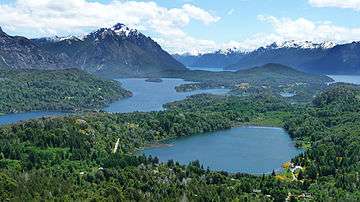 Summer view (in winter is snow and autumn in shimmering red and ocher leaves of trees) of Nahuel Huapi Lake, in the provinces of Neuquén and Río Negro.
Summer view (in winter is snow and autumn in shimmering red and ocher leaves of trees) of Nahuel Huapi Lake, in the provinces of Neuquén and Río Negro.- The Cerro Catedral in Bariloche during winter, Río Negro, is the largest ski resort of Latin America. Bariloche is also the largest tourist destination in the Andean Patagonia
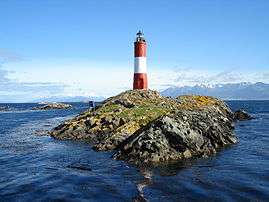 The Faro Les Éclaireurs during summer in Ushuaia internationally recognized city as the southernmost of the planet.
The Faro Les Éclaireurs during summer in Ushuaia internationally recognized city as the southernmost of the planet. The Mount Chaltén during summer (in winter the landscape is snowed).
The Mount Chaltén during summer (in winter the landscape is snowed).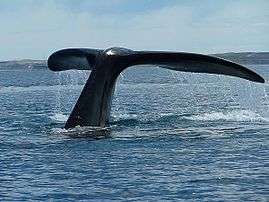 Valdés Peninsula receives the largest breeding population of southern right whale in the world.
Valdés Peninsula receives the largest breeding population of southern right whale in the world.- San Martín de los Andes at the Lácar Lake in summer (in winter the landscape is snowed)
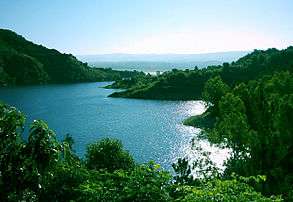 Summer view of a lake in the Calamuchita Valley, Province of Córdoba, in winter the valley is usually snowed.
Summer view of a lake in the Calamuchita Valley, Province of Córdoba, in winter the valley is usually snowed.
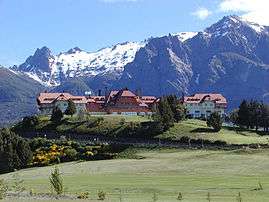 Llao Llao Hotel, Bariloche in summer.
Llao Llao Hotel, Bariloche in summer.
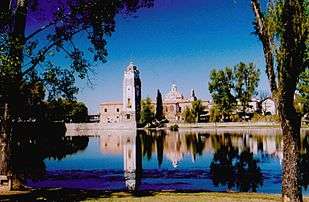
 View of the coast of the city of Junín annexed to the Laguna de Gómez in the heart of the Pampas Plains
View of the coast of the city of Junín annexed to the Laguna de Gómez in the heart of the Pampas Plains- Quetrihué Isthmus seen from the viewpoint of Bahía Mansa, Villa La Angostura in summer.
 Glacier cave in Los Glaciares National Park in the austral summer.
Glacier cave in Los Glaciares National Park in the austral summer. Viaducto La Polvorilla, one of the landmarks of the Tren a las nubes (Train to the Clouds)
Viaducto La Polvorilla, one of the landmarks of the Tren a las nubes (Train to the Clouds)
 Colonial cabildo of the city of Salta, today Museo Histórico del Norte
Colonial cabildo of the city of Salta, today Museo Histórico del Norte
- Rock formation or geoform in Cafayate (note its size compared to erect human beings)
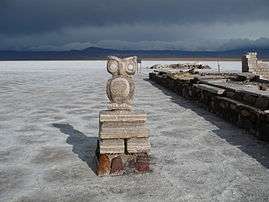
 Balcozna Village in Catamarca
Balcozna Village in Catamarca Mountain called Cono de Arita in salar de Arizaro, province of Salta
Mountain called Cono de Arita in salar de Arizaro, province of Salta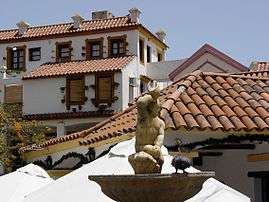 Neocolonial architecture in the city of La Rioja
Neocolonial architecture in the city of La Rioja- pre-Columbian ruins of Pucará of Tilcara
 Cliffs at the entrance of Talampaya National Park, La Rioja
Cliffs at the entrance of Talampaya National Park, La Rioja Laguna Mariposa, Tierra del Fuego, Antarctica, and South Atlantic Islands Province in summer.
Laguna Mariposa, Tierra del Fuego, Antarctica, and South Atlantic Islands Province in summer.- The Quebrada del Zonda in the Province of San Juan.
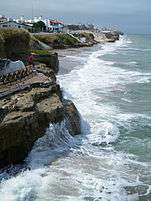 Overview of Las Grutas, province of Río Negro.
Overview of Las Grutas, province of Río Negro.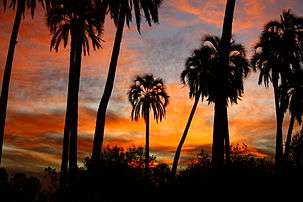
- Miramar cordobesa: the current summer beach on the south coast of Ansenuza Sea, Province of Córdoba (Argentina).

- Rosario and the Paraná River
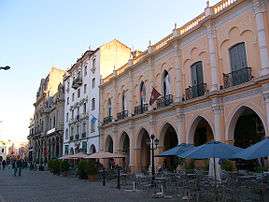 Main square in Salta
Main square in Salta
Ethical traveler destination
Argentina has been included in the 2010, 2011 and 2012 lists of "The Developing World's 10 Best Ethical Destinations." This is an annual ranking produced by Ethical Traveler magazine, which is based on a study of developing nations from around the world to identify the best tourism destinations among them. The benchmarking uses categories such as environmental protection, social welfare, and human rights.[14][15][16]
Safety and security
The U.S. Department of State warns travelers in Argentina that "drivers frequently ignore traffic laws[17] and vehicles often travel at excessive speeds... traffic accidents are the primary threat to life and limb in Argentina."[18] Argentina has the highest traffic mortality rate in South America, with Argentine drivers causing 20 deaths each day (about 7,000 a year), with more than 120,000 people injured or maimed each year. These deaths have included tourists from various parts of the world.[19] Pedestrians should exercise extreme caution.
See also
Notes
- ↑ Ministry of Tourism of Argentina: Regions
- ↑ World Tourism Organization (2008). "UNWTO World Tourism Barometer June 2008" (PDF). UNWTO. Retrieved August 5, 2008.Volume 6 No. 2 Page 30
- ↑ www.wttc.travel Retrieved on 10 March 2008
- ↑ WTTC reveals strong growth for Argentina Retrieved on 10 March 2008
- ↑ Travel +Leisure Magazine worldsbest/2007 Retrieved on 10 March 2008
- ↑ Official website of "The North" touristic region
- ↑
- ↑ http://www.atlas.catamarca.gov.ar/index.php?option=com_content&view=article&id=196&Itemid=206
- ↑ C. Michael Hogan (2008) Pali Aike, The Megalithic Portal, ed. A. Burnham
- ↑
- ↑
- ↑ UNESCO World Heritage Sites: Argentina
- ↑ "Iglesia Nuestra Señora Del Rosario Y San Roque". http://www.tripin.travel (in Spanish). Retrieved 1 November 2015. External link in
|website=(help) - ↑ "Ethical travel destinations unveiled: Argentina, Barbados, Chile". The Independent. Relaxnews. 2010-12-10. Retrieved 2010-12-11.
- ↑ Jane Esberg, Jeff Greenwald and Natalie Lefevre. "The Developing World's 10 Best Ethical Destinations". Ethical Traveler. Retrieved 2010-12-11.
- ↑ "The Developing World's 10 Best Ethical Destinations: 2012". Ethical Traveler. 2012-01-05. Retrieved 2012-01-26.
- ↑ A non-profit working for traffic safety in Argentina noted that "drivers did not respect the red traffic light approximately 1,903,560 times every day" and that although drivers knew the dangers of drinking and driving "83% (of survey respondents) admitted to 'driving after drinking alcohol'".
- ↑ U.S Department of State Country Guide
- ↑ See Luchemos por la Vida - Asociación Civil
References
- (Spanish) Instituto Nacional de Estadística y Censos (INDEC), Encuesta de Turismo Internacional (ETI)
External links
| Wikivoyage has a travel guide for Argentina. |
| Wikimedia Commons has media related to Tourism in Argentina. |
- (English) Argentinan Major Cities
- (English) (French) (German) (Italian) (Portuguese) (Spanish) Argentina National Tourism Promotion Institute
- (Spanish) (English) Ministry of Tourism
- (English) Let's fight for life
- (English) U.S. Dept. of State guide for tourists to Argentina
- (English) (Spanish) (Portuguese) Official promotion portal for Argentina
- (English) (Spanish) (Portuguese) Tourism Argentina
- (English) (German) (Spanish) (French) (Portuguese) (Italian) All about wine tourism in Argentina
